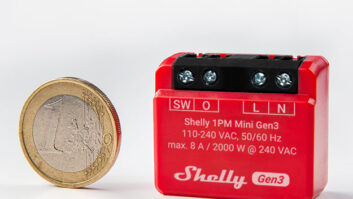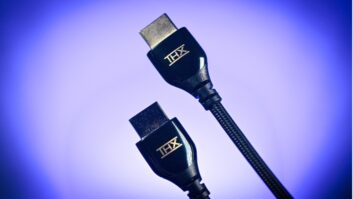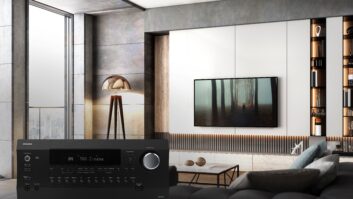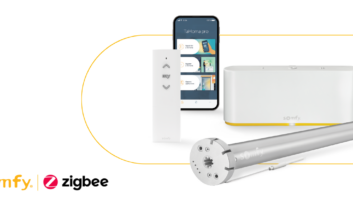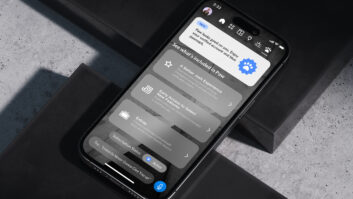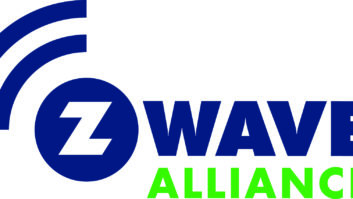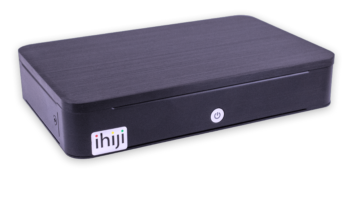With the majority of U.S. residences receiving broadband connections, the number of devices capable of being incorporated into the home network has increased substantially.
When you look at home networking over the past few years, what has really driven the market is the need for broadband, observed Scott Carpenter, product manager for wireless solutions at AMX. As more and more U.S. homes have incorporated broadband, they are putting in the infrastructure that allows other network-enabled products and services to run on that initial backbone.
Not only is the infrastructure capable of linking multiple PCs within the house; items as disparate as audiovisual systems and thermostats are coming online. Much headway, too, has been made in the area of wireless networking, noted Josh Stene, technical director at Crestron Electronics.
Wireless 802.11 networks have enabled integrators to quickly and efficiently get their customers connected, he said. These networks are also the backbone for many of the audiovisual technologies.
With wireless systems, the challenge remains dealing with potential interference. In an effort to address this, AMX offers software that enables integrators to conduct a site survey from the touch panel that is installed in the home. The software allows the custom installer to view all of the access points in the area, whether there is encryption or not, and which channel each access point rests on. Then they can select an open channel that would maximize performance on the network. They can also walk around with the panel and identify dead spots within the network, Carpenter explained. Having these types of tools allows installers to correctly set up the number of access points that are needed within the residence, and to make sure that the roaming is possible.
The configuration of IP networks in general still presents a number of issues, especially when it comes to the assignment of IP addresses. To start with, many pieces of automation technology do not come equipped with displays or keyboards. IP was designed mostly to be between computers, when they started designing the protocols back in the late sixties, said Eric Smith, chief technology officer at Control4. The way they were set up originally is that you had to set up the address on every single device. If you have a device that doesnt have a display or a keyboard, its a challenge to do that.
With DHCP this can be avoided, because each device receives an IP address from another device on the network. The problem is that one can never be sure which device corresponds with which address at any given time.
Gordon van Zuiden, president of cyberManor in Los Gatos, California, noted that there is no universal software compatibility standard dictating how devices will work with one another. Each company will say that its on the network, but they prefer to work with certain manufacturers. They say it should be compatible with everything, but they may have only tested it with a specific lighting system and a specific control panel, he said. Were not to the point where we know that we have universal access. At the enterprise level, you can feel pretty good no matter what PC manufacturer, wireless access point network server, what software application you are using; you are pretty sure, at the enterprise level, that all of those will work seamlessly. This phenomenon has yet to make it to the home.
Companies like Control4 have made an effort to get some of these issues with auto-discovery devices that utilize standards such as universal plug-and-play, allowing IP-enabled devices to announce themselves on the network. Control4 employs Simple Service Delivery Protocol (SSDP)part of plug-and-playwhich allows devices to find each other on the network, and then obtain their own IP addresses. What really happens is that every device is assigned an unique IP address so that no other device will have the same one, Smith explained. With this, you can learn about all of the Control4 devices on the network. They will answer with their Universal Unique ID (UUID) and their IP address. The UUID is stored in a permanent table on Control4s controller; a second temporary table keeps track of its IP address. With the UUID stored permanently, if there is a power outage or if we need to re-boot, all the devices answer, and so even if the IP address changes, it doesnt matter.
Smith pointed out that as an increasing amount of content is distributed over the home network, the overall infrastructure is going to be pushed to the limit. As we are starting to see downloadable digital content, we are going to end up with situations where a 25-megabit per second video stream from one HD unit to another, so that you can watch the TV show that you just recorded downstairs on your TV upstairs, he illustrated, adding that quality of service on the network will become a bigger issue than it traditionally has been. Historically, the things that we have been doing in our business have been so low-bandwidth that it didnt matter. But when you start getting into two or three HD streams on that network, now choosing a switch that is a higher quality switch becomes important. These are the types of things that people will be dealing with.
Carolyn Heinze is a freelance writer/editor.
